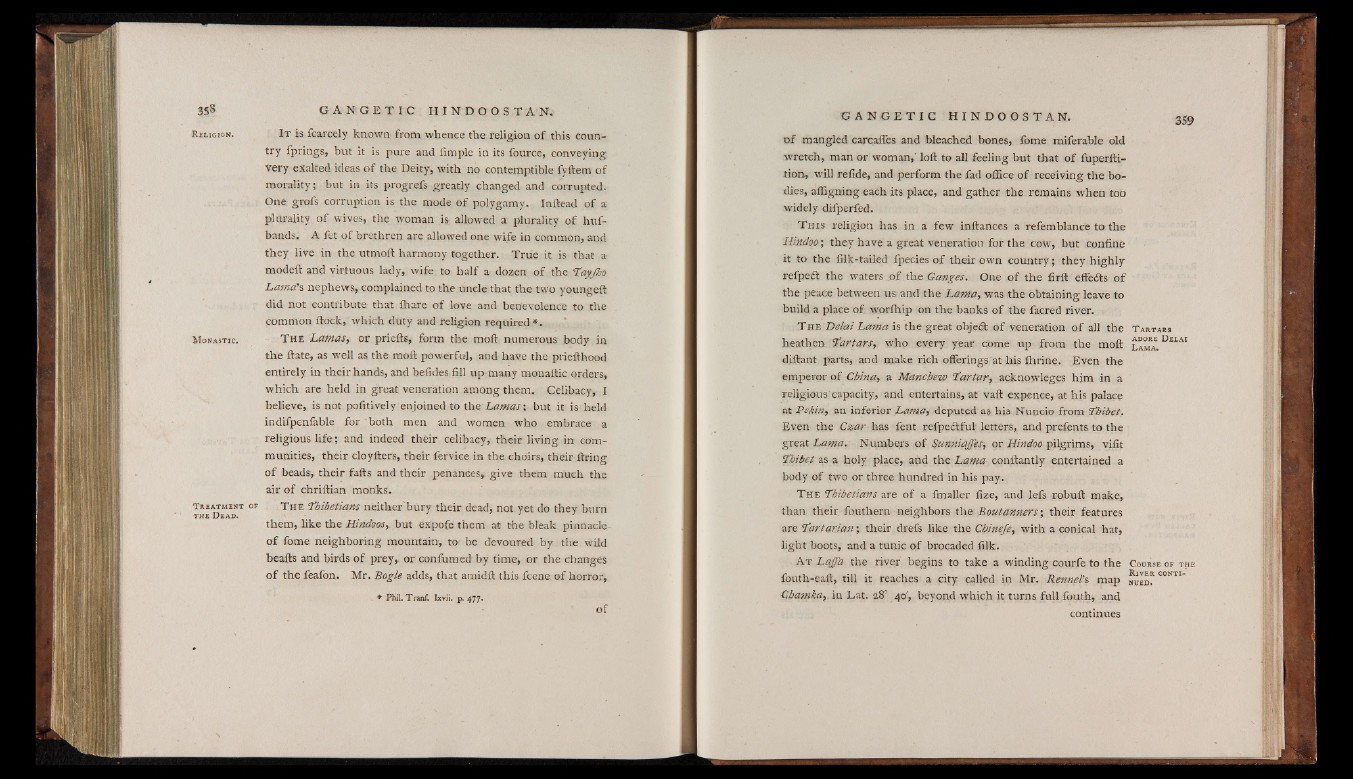
R eligion.
M onastic .
T rea tm ent
th e D e ad .
I t is fcarcely known from whence the religion o f this country
fprings, but it is pure and iimple in its fource, conveying
very exalted ideas o f the Deity, with no contemptible fyftem of
morality; but in its progrefs greatly changed and corrupted.
One grofs corruption is the mode of polygamy. Inftead o f a
plurality of wives, the woman is allowed a plurality of huf-
bands. A fet of brethren are allowed one wife in common, and
they live in the utmoft harmony together. True it is that a
modeft and virtuous lady, wife to half a dozen of the Tayjho
Lama's nephews, complained to the uncle that the two youngeft
did not contribute that ihare of love and benevolence to the
common ftock, which duty and religion required*.
T he Lamas, or priefts, form the moft numerous body in
the ftate, as well as the moft powerful, and have the priefthood
entirely in their hands, and befides fill up many monaftic orders,
which are held in great veneration among them. Celibacy, I
believe* is not pofitively enjoined to the Lamas; but it is held
indifpenfable for both men and women Who embrace a
religious life; and indeed their celibacy, their living, in communities,
their cloyfters, their fervice in the choirs, their ftring
of beads, their fails and their penances,: give them much the
air of chriftian monks.
The Thibetians neither bury their dead, not yet do they burn
them, like the Hindoos, but expofe them at the bleak pinnacle
of fome neighboring mountain, to be devoured by the wild
beafts and birds of prey, or confumed by time, or the changes
o f the feafon. Mr. Bogle adds, that amidft this fcene of horror,
* Phil. Tranf* Ixvii. p. 477.
of
o f mangled carcafles and bleached bones, fome miferable old
wretch, man or woman,' loft to all feeling but that o f fuperfti-
tion, will refide, and perform the fad office of receiving the bodies,
affigning each its place, and gather the remains when too
widely difperfed.
T h i s religion has in a few inftances a refemblance to the
Hindoo; they have a great veneration for the cow, but confine
it to the filk-tailed fpecies o f their own country; they highly
refpeil the waters o f the Ganges. One o f the firft effeits o f
the peace between us and the Lama, was the obtaining leave to
build a place of worihip on the banks of the facred river.
The Delai Lama is the great objedt of veneration o f all the Tartars
heathen Tartars, who every year come up from the moft lama. De1'ai
diftant parts, and make rich offerings at his ffirine. Even the
emperor of China, a Mancbew Tartar, acknowleges him in a
religious capacity, and entertains, at vaft expence, at his palace
at Pekin, an inferior Lama, deputed as his Nuncio from Thibet.
Even the Czar has lent refpectful letters, and prefents to the
great Lama. Numbers o f Sunniajes, or Hindoo pilgrims, vifit
Thibet as a holy place, and the Lama con|ftantly entertained a
body of two or three hundred in his pay.
T h e Thibetians are o f a fmaller fize, and lefs robuft make,
than their fouthern neighbors the Boutanners; their features
are Tartarian; their drefs like the Cbinefe, with a conical hat,
light boots, and a tunic of brocaded filk.
A t Lajfa the river begins to take a winding courfe to the C o u r s e o f t h e
fouth-eaft, till it reaches a city called in Mr. Rennet's map hued!* conti"
Cbamka,. in Lat. 28° 40', beyond which it turns full fouth, and
continues